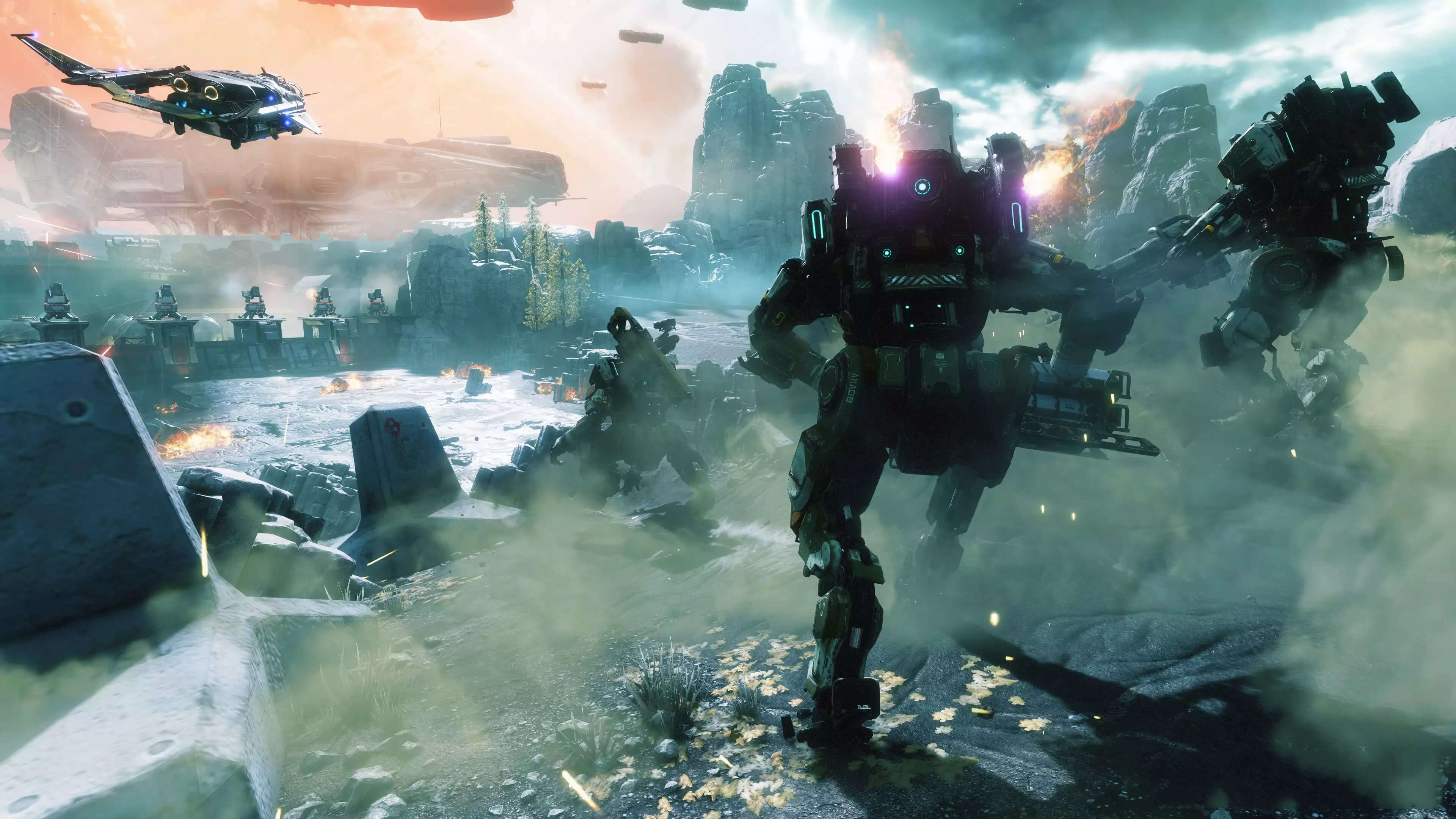For the past few weeks we've been sitting and waiting for Titanfall 2, wondering if it would make the list of blockbuster game releases where we skip performance testing due to a lack of proper PC optimization. That's what happened with the original Titanfall in 2014, which came with rocky graphics driver support and suffered of hangups, which prevented us from providing our usual performance analysis at the time. It was troubling to think what the sequel might bring after developer Respawn Entertainment excluded PC players from Titanfall 2's multiplayer beta.
Luckily, initial concerns about our preferred platform being neglected appear to have been uncalled for. Released on Xbox One, PlayStation 4 and PC last Friday, members of the master race can look forward to vastly superior image quality in Titanfall 2 – assuming you have the horsepower to pull it off – which is precisely why we're here: to see exactly what kind of hardware you'll need to experience this game in all of its glory at 1080p, 1440p and 4K.
Featuring frantic combat and fluid mechanics, the original Titanfall was the sort of shooter you'd want to play on max quality with no hiccups, perhaps even across multiple graphics cards and monitors. Without delving into details just yet, we're happy to report that Titanfall 2 runs well on both Nvidia and AMD hardware. A lack of proper PC hardware optimization doesn't seem to be a problem here, though it seems to be having an initial issue with sales.
As Battlefield 1's popularity soars to new heights, the timing for Titanfall 2's arrival appears to have been less than ideal. Battlefield 1 also featured a fun-filled weekend of beta testing on all three platforms about a month before release, and we can't help but feel that Respawn/EA could have done the same.
On the bright side, Titanfall 2 looks great and has been receiving plenty of positive reviews, so despite a weaker than expected online presence, the game does appear to be worth buying. Those of you pondering that purchase ought to have a good idea of what to expect performance-wise after reading on.
Testing Methodology
Our benchmark pass lasted 60 seconds, we started at the beginning of the first mission. Having crash landed the player breaks out of the escape pod, only to be ambushed by enemy soldiers. This test features plenty of AI-controlled characters and more importantly an easy to follow path that allowed us to repeatedly reproduce the test with a high degree of accuracy.
Since the game seems well optimized, we didn't find it necessary to test many quality presets and instead focused on including every graphics card we had on hand. We tested three standard resolutions: 1080p, 1440p and 4K.
The maximum quality settings were used along with TSAA anti-aliasing. There isn't anything like a "GPU Memory Restriction" option and from what we can tell the game doesn't scale down to accommodate graphics cards light on VRAM.
The latest AMD and Nvidia graphics drivers were used for testing and it should be said that both camps have been actively working to improve support for their competing GPUs in Titanfall 2. AMD's Crimson Edition 16.10.3 driver notes a bug fix that addresses an intermittent game crash, while Nvidia has been doing much the same and it's worth noting that the company's 375.70 release is its third game-ready driver.
Test System Specs
- Intel Core i7-6700K (4.50GHz)
- 8GBx4 Kingston Predator DDR4-3000
- Asrock Z170 Extreme7+ (Intel Z170)
- Silverstone Strider 700w PSU
- Samsung SSD 850 Pro 2TB
- Microsoft Windows 10 Pro 64-bit
- Nvidia GeForce 375.70 WHQL
- AMD Crimson Edition 16.10.3 Hotfix
- Radeon RX 480 (8192MB)
- Radeon RX 470 (4096MB)
- Radeon RX 460 (4096MB)
- Radeon R9 Fury X (4096MB)
- Radeon R9 Fury (4096MB)
- Radeon R9 Nano (4096MB)
- Radeon R9 390X (8192MB)
- Radeon R9 390 (8192MB)
- Radeon R9 380X (4096MB)
- Radeon R9 380 (2048MB)
- Radeon R7 360 (2048MB)
- Radeon R9 290X (4096MB)
- Radeon R9 290 (4096MB)
- Radeon R9 285 (2048MB)
- Radeon R9 280X (3072MB)
- Radeon R9 280 (3072MB)
- Radeon R9 270X (2048MB)
- Radeon R9 270 (2048MB)
- Radeon HD 7970 GHz (3072MB)
- Radeon HD 7970 (3072MB)
- Radeon HD 7950 Boost (3072MB)
- Radeon HD 7950 (3072MB)
- Radeon HD 7870 (2048MB)
- Nvidia Titan X (12288MB)
- GeForce GTX 1080 (8192MB)
- GeForce GTX 1070 (8192MB)
- GeForce GTX 1060 (6144MB)
- GeForce GTX 1060 (3072MB)
- GeForce GTX 1050 (2048MB)
- GeForce GTX 1050 Ti (4096MB)
- GeForce GTX Titan (6144MB)
- GeForce GTX 980 Ti (6144MB)
- GeForce GTX 980 (4096MB)
- GeForce GTX 970 (4096MB)
- GeForce GTX 960 (2048MB)
- GeForce GTX 950 (2048MB)
- GeForce GTX 780 Ti (3072MB)
- GeForce GTX 780 (3072MB)
- GeForce GTX 770 (2048MB)
- GeForce GTX 760 (2048MB)
- GeForce GTX 750 Ti (2048MB)
- GeForce GTX 680 (2048MB)
- GeForce GTX 660 Ti (2048MB)
Benchmarks: 1080p Performance

For a console-like 30fps, PC gamers only need an RX 460 or GTX 660 Ti when playing Titanfall 2 at 1080p using the very high quality settings with TSAA. That said, we'd turn to something like the GTX 960/1050 Ti or R9 380 for their smoother frame rates and if it's a 60fps average you're after, then the R9 380X will suffice while the GTX 970 or R9 290 would be ideal.



